#sudarshana chakra
Video
youtube
కృష్ణుడి తరువాత సుదర్శన చక్రం ఏమైంది? | What happened to Sudarshan Chakra after Lord Krishna?
#youtube#Sudarshan Chakra after Lord Krishna#voice of maheedhar#maheedhar planet leaf#sudarshan chakra#krishna sudarshan chakra#where is sudarshan chakra#krishna#what happened to sudarshan chakra after lord krishna?#sudarshan chakra story#sudarshana chakra#who gave sudarshan chakra to krishna#sudarshana chakra after krishna#vishnu sudarshan chakra#what happened to sudarshan chakra after mahabharata#sudarshan chakra mantra#sudarshana chakra mantra#about sudarshan chakra#story of sudarshan chakra#sri krishna sudarshan chakra
0 notes
Text

Sudarshana Chakra depicted as Chakratalvar who is an ayudhapurusha and a fierce aspect of his owner Vishnu
#Vishnu#Chakratalvar#Sudarshana#Chakra#hinduism#symbols#library#old books#illustrations#hindi#gods#sacred
1 note
·
View note
Text

#Sudarshan chakra yantra benefits#sudarshan yantra benefits#sudarshana yantra benefits#maha sudarshan yantra benefits#shri sudarshan yantra#sri sudarshana yantra
0 notes
Text
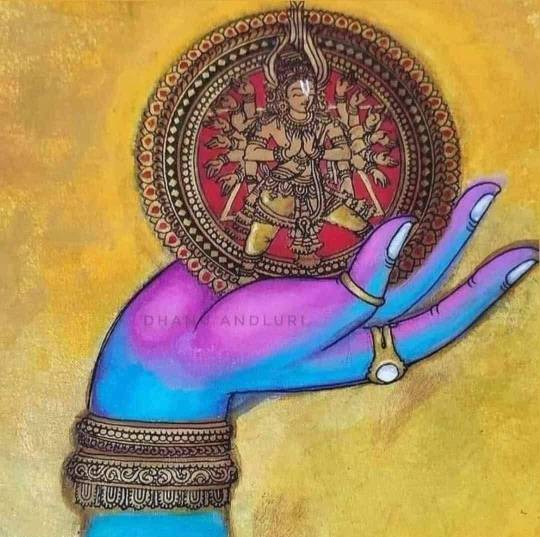

Maha Sudarshana Mantra
Om Shreem Hreem Kleem Krishnaaya Govindaaya Gopeejana Vallabhaya Paraya Param Purushaaya Paramathman Para Karma Manthtra Yanthra Tanthra Oushadha Visha Aabichara Astra Shastra Samhara Samhara Mrithiyur Mochaya Mochaya Om Namo Bhagavathey Maha Sudarshanaya Om Preem Reem Rum Deepthrey Jwala Pareethaya Sarwa Digkchobhanakaraye Karaeya Hum Phat Para Bhrahmaney Param Jyothish Swaha Om Namo Bhagavathey Sudarshanaya Om Namo Bhagvathey Maha Sudarshanaya Maha Chakraya Maha Jwaalaya Sarva Roga Prashamanaya Karma Bandha Vimochanaya Paadaathimastha Paryanthan Vaada Janitha Rogaan Pitha Janitha Rogaan Shlesma Janitha Rogaan Daathusankalikoth Bhava Naanaa Vikaara Rogaan Nasaya Nasaya Prasamaya Prasamaya
The meaning of the mantra goes like this, “O Lord Krishna, you protect the universe, and you control it. You are the supreme power, and you are the beloved of the gopikas. Oh Lord, protect me from every evil power. You who has the entire world in his hands. You who holds the Sudarshana Chakra and destroys every injustice, I surrender myself to you.”
Vishnu´s hand with Sudarshana Chakra
by Dhanu Andluri
Sudarshana Chakra
The Sudarshana Chakra (सुदर्शन चक्र) is a spinning, disk-like weapon literally meaning "disk of auspicious vision," having 108 serrated edges used by the Hindu god [Vishnu]. The Sudarshana Chakra is generally portrayed on the right rear hand of the four hands of Vishnu, who also holds a shankha (conch shell), [Gada] (mace) and a padma (lotus). While in the Rigveda the Chakra was "[Vishnu]'s" symbol as the wheel of time, by the late period Sudarshana Chakra emerged as an ayudhapurusha (anthropomorphic form), as a fierce form of Vishnu, used for the destruction of an enemy. In Tamil, the Sudarshana Chakra is also known as Chakkrath Azhwar (translated as Ring/Circlet of God).
22 notes
·
View notes
Text

☀ Sri Sudarshana Chakra ॐ ☀
"O Sudarshana wheel, most favorite of Acyuta, the Supreme Personality of Godhead, you have thousands of spokes. O master of the material world, destroyer of all weapons, original vision of the Personality of Godhead, I offer my respectful obeisances unto you."~Srimad-Bhagavatam 9.5.4
17 notes
·
View notes
Text
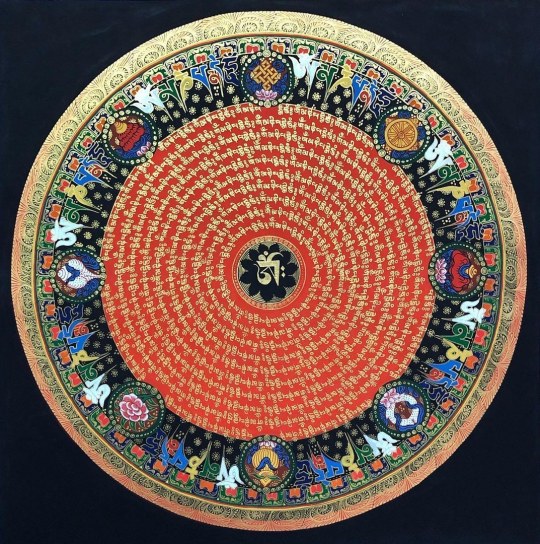
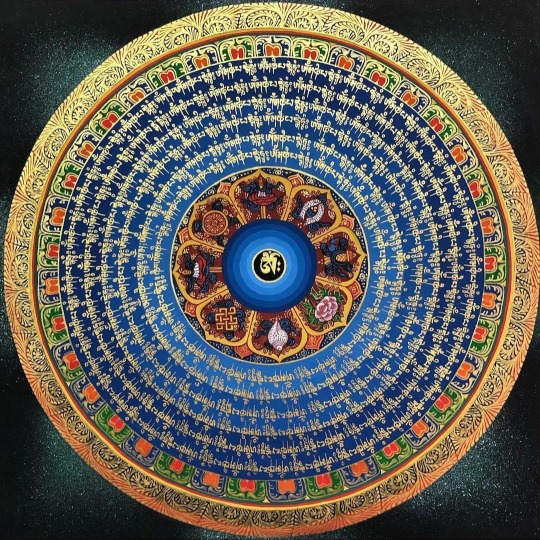
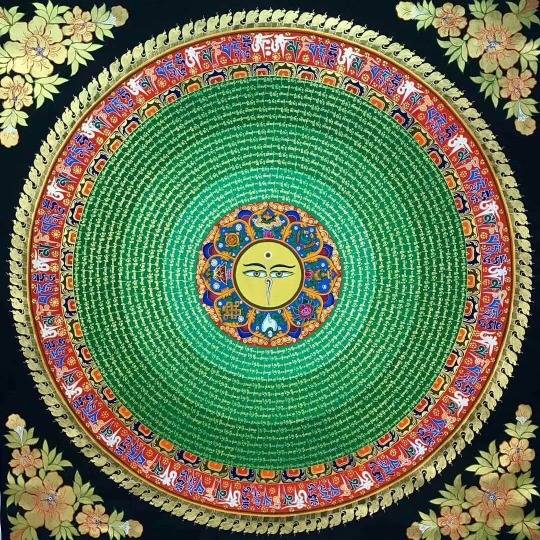

Ashtamangala Mandalas
Ashtamangala - Eight Auspicious Symbols (ashta meaning eight and mangala meaning auspicious; Sanskrit अष्टमंगल Aṣṭamaṅgala):
The Endless Knot
The Treasure Vase
The Lotus Flower
Two Golden Fish
The Parasol
The Conch Shell
The Dharma Wheel
The Banner of Victory
"A suite of eight auspicious symbols revered for their sacredness in Hinduism, Jainism, Sikhism, and Buddhism. Originally they were used in India at ceremonies and coronations for a king, but over time they’ve become embedded within varying cultures, often seen as common motifs in households and in art.
The White Conch Shell represents the pervasive sound of dharma and is said to awaken disciples from the deep slumber of sleep that is veiled in ignorance, urging us to seek our own welfare and the welfare of others. In Buddhism, it represents the voice of Buddha and his sacred teachings, and in Indian epic literature, it is the hero’s trumpet. In Hinduism, the conch shell is a symbol of the Sudarshana Chakra.
The Endless Knot was originally a symbol of love, and it represents the ultimate unity within everything. The endless knot also symbolizes the great spirit of the Buddha, the interdependence of all things, as well as, enlightenment that arises from the union of compassion and wisdom.
The Two Goldfish originally represented two sacred rivers of India; the Ganges, and Yamuna, and is associated with the lunar and solar channels, said to originate in the nostrils, carrying alternating rhythms of breath and prana. In Buddhism, they represent the vision of the Buddha, as well as, aiding those along the spiritual path towards liberation without drowning in samsara.
The Lotus Flower symbolizes divine beauty and primordial purity, for its ability to float above muddy water, free from attachments and desires. Buddhas and Bodhisattvas are often represented sitting on lotus flowers, symbolizing divine language and the purification of the body, word, and spirit. Today, the lotus flower is mostly known for symbolizing the opening of our energy centers aka; chakras.
The Jewelled Parasol was originally an attribute of royalty in India, and in Buddhism it represents the head of the Buddha, offering protection against material and spiritual dangers such as illnesses, harmful forces, and the elements of the aether. It can also represent the canopy of heaven, the expansive firmament of the sky, and the unfolding of space.
The Treasure Vase represents material ease or prosperity in wealth, health or longevity, and spiritual benefits. In Buddhism, it represents the neck of the Buddha and his unlimited ability to teach the dharma, which never lessons or loses its value over time. In Vajrayāna anointing ceremonies it is the container of wisdom and can represent the vastness of space.
The Victory Banner represents the body of the Buddha and his victory over the four māras, or hindrances in the path of enlightenment… pride, desire, disturbing emotions, and the fear of death. In Tibetan Buddhism, there are eleven different forms of the banner, which represent eleven different methods for combating negative forces.
The Dharmachakra or “Wheel of the Law” is the most well know symbol throughout Buddhism, historically symbolizing a lunar or solar chariot, driven by royalty, called a Chakravartin. A Chakravartin is the one whose wheels turn without barriers, and as such, is a master of both land and sea aka; physical reality and akashic waters.
Meditation and contemplation upon these eight auspicious symbols is said to have the ability to bring us closer to understanding the divine nature of the Buddha and the divinity within each of us waiting to be self-realized."
© Written by Carrie Love
33 notes
·
View notes
Photo

Vishnu´s hand with Sudarshana Chakra by Dhanu Andluri
66 notes
·
View notes
Text
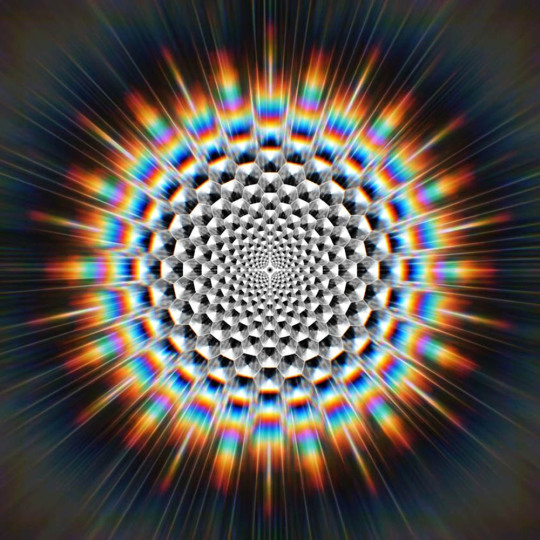
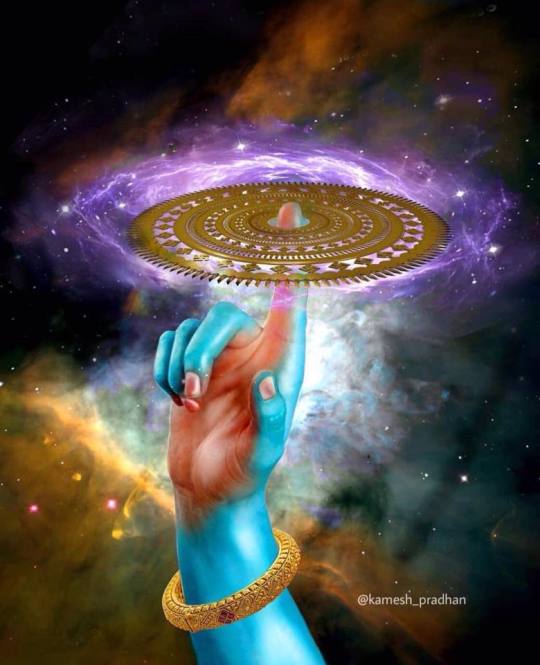
Sudarshana Chakra
(The Wheel of Auspicious Vision)
The Sudarshana Chakra legend that is recounted is the one in which Vishwakarma, the architect of Gods diminished the shine of Lord Surya, the Sun God. Vishwakarma's daughter was married to Surya, but could not go near Him as it was difficult to endure His scorching brilliance and heat. So Vishwakarma had to reduce the intensity of the Sun by churning him. This created a Sun dust from which Vishwakarma created a few powerful golden objects, including the Sudarshana Chakra. Other weapons were Trishula and Pushpak Vimaan which were respectively the weapons of Lord Vishnu, Shiva and Lord Kuber. Lord Vishnu holding Sudarshana Chakra is worshipped as Chakrathazhwar, Sage of the wheel.
When Lord Krishna took incarnation, Shri Vishnu gave him this chakra which he could use immediately at any time, it was his own property. During Samudra Manthan, Lord Vishnu used the Sudarshan chakra to cut through the demon Swarbanu who then became Rahu and Ketu. During Daksha yagna it was used by Shri Vishnu to cut burnt Satis body into 51 parts which fell on earth and became Shakti Peeths, holy places for worshipping goddess Shakti.
1- The Sudarshan Chakra has 108 serrated blades, and has the capability to travel several million yojanas (1 Yojana = 8 kms) at a blink of an eye.
2- It is not thrown at anybody, rather, by willpower, it is sent against the enemy. It has tremendous occult and spiritual power to destroy everything.
3- Once out of finger, it chases the enemy and never returns without achieving intended results.
Om Namo Narayana -- Jai Shri Vishnu
6 notes
·
View notes
Text
Suddenly, the thought that the mysterious character is Krishna made so much sense.
Arjuna is the bonus servant, not only because this event collab with FSR but also because Krishna is very close to Arjuna.
Ashwatthama especially makes sense if this is Krishna. Indra just simply didn't have anything with Ashwatthama, but Krishna...the weapon that Ashwatthama used is Sudarshana Chakra of Krishna. Krishna used to meet Ash and mentioned that he would give anything to Arjuna (which will make AA a little more understandable).
Also, even ox and cow not really the same but still...this will make the interact of NP of that new Avenger and Krishna interesting, I guess.
I'm really scared right now. Hope I will be wrong.
Helpppppp, I want Yudhisthira
3 notes
·
View notes
Text
Havan | Day - IV •Weapon•


Sudarshana Chakra (सुदर्शन चक्र, lit. "disc of auspicious vision")
↦ In the Mahabharata, Krishna, identified as Vishnu, wields this disc of ultime vision as a weapon.
↦ At the Rajasuya yagna of Emperor Yudhishthira, he beheads Shishupala with the Sudarshana Chakra after the latter surpasses 100 sins.


↦ When Arjun vows to kill Jayadratha, Krishna creates an artificial sunset using his Sudarshana Chakra. Seeing this, Jayadratha comes out of the protection to celebrate Arjuna's defeat as he believes the battle to have ended. Krishna then commands Arjuna to assassinate him.


@agnisuta | Havan 2022 | Day #4
45 notes
·
View notes
Text
Kerala Mythology series :~
The story of Vishnumaya part 2
Training by Mahadev 🔥
Shiva told Vishnumaya, about the demon Jalandhar (*according to us Keralites , Vishnumaya killed Jalandhar*) , Vishnumaya Listened Keenly as Shiva told him about the Frightening Demon , who defeated the devas. Even Lord Indra couldn't Defeat . Shiva also revealed the Fact that , Vishnumaya was destined to Kill Jalandhar.
Shiva then told Vishnumaya that , he himself will teach him the Art of Kalari ( also known as the mother of Martial Arts) , and other celestial Astras.
The training went on for Days and Days..
And finally the Day they were waiting had Arrived...
In the BATTLEFIELD 🏹
The sun was red , the wind was blowing really Fast as VISHNUMAYA, reached the Battleground along with other Devas. And he Saw the Mighty Asur , Jalandhar.
Vishnumaya challenged Jalandhar for a Fight , which he accepted . Vishnumaya and Jalandhar, had a Fight....Which was soo extreme. Vishnumaya used his Kuruvadi ( a stick like weapon) , and Hit Jalandhar right on his head. Jalandhar Fell down...but it didn't do any harm to him. Jalandhar laughed maniacally. And started Insulting Vishnumaya's Adoptive Mother ~ Koolivaka.
Vishnumaya Became Really Furious as he didn't like anyone insulting his Mother. Vishnumaya closed his eyes and chanted some mantras. And he turned himself into the Most powerful Weapon of Lord Vishnu..The SUDARSHANA CHAKRA. And Cut off Jalandhar's Head.
The devas were Shocked on seeing this.
Jalandhar got Killed by Vishnumaya.
Vishnumaya was still In Anger. But Shiva calmed him Down.
Indradev , requested Vishnumaya to stay in the swargalok , but Vishnumaya refused, saying that He belonged to the Poors , And he need to stay on Earth , for his Devotees. All the Devas Blessed him To be immortal and strong. Bidding Farewell to his Parents, Vishnumaya went back to Earth. Where he truly Belonged .
Chaos Again!💥
Vishnumaya happily reached his house. And started calling for his mother to tell her about the experiences that he experienced in the Devlok. But he didn't get any Response. The house was silent, the forest was silent. When he entered inside his house...he got shocked. All the things were laying here and there. There were Nail marks in the Ground. Vishnumaya started Panicking , he started searching for his mother , everywhere..
Then he heard some Familiar Screams , Yes...it was his mother. Vishnumaya ran to the direction in which the screams came .
He then saw a scary sight , a demon was dragging his mother Mercilessly, and was laughing Maniacally. Vishnumaya Got Angry, he jumped with his Kuruvadi , and started Fighting with the Demon. The fight was so extreme that , Vishnumaya got Wounds all over his body. His blood was flowing down the Ground. And then Kuttichaathans ( Bhootas / Ghosts , or good spirits ) were born , They also started fighting with the Demon. And finally Killed him .
He healed Koolivaka using his powers. And said to his mother, that he need to go away to another place , in order to protect his devotees. Koolivaka was sad. Vishnumaya gave a hug to his mother, he consoled her.
Finally, Vishnumaya got on his mount Buffallo and left for the sake of his Devotees.
Offerings for Vishnumaya: Toddy (alcohol)



#unknown stories of sanatan#Vishnumaya#damn kerala has soo many sick stories#keralamythology#series#series: kerala mythos
4 notes
·
View notes
Text
Maha Sudarshan Yantra

Maha Sudarshan Yantra: Revealing the Divine Shield
Introduction
The Maha Sudarshan Yantra is more than just an exquisite geometric design engraved into copper; it is a portal to cosmic forces and spiritual protection. Let us explore the magical universe of this precious talisman.
What Is The Maha Sudarshan Yantra?
The Maha Sudarshan Yantra is a religious diagram depicting Lord Vishnu's Sudarshana Chakra, or cosmic wheel. This chakra, a heavenly weapon, is supposed to spin at breakneck speed, annihilating negativity, bad energies, and impediments in its path. The Yantra acts as a conduit for bringing holy energy into our life.
Symbolism and Significance
The Maha Sudarshan Yantra protects against malicious forces, mental assaults, and bad wishes. It surrounds the devotee in a protective aura, keeping them secure from harm.
Obstacle Removal: The Yantra, like Lord Vishnu's Sudarshana Chakra, removes impediments from our path in life. It removes obstacles, both physical and metaphysical, allowing us to go unfettered.
Healing: The Yantra's vibrations match cosmic frequencies, providing physical and mental healing. It cleanses our energy centers (chakras) and restores equilibrium.
Spiritual Evolution: By meditating on the Yantra, one can get spiritual insights, strengthen their connection to the divine, and speed up their spiritual path.
Craftmanship and Material
The Maha Sudarshan Yantra is expertly made from high-quality copper. Here's why copper was chosen.
Copper carries energy efficiently, therefore the Yantra effectively channels heavenly vibrations.
Purity: Copper's purity represents spiritual clarity and openness. It resonates at higher frequencies.
Durability: The thick copper assures long-term use, allowing future generations to benefit from its power.
Energization and blessing.
Before reaching your hands, the Yantra goes through a holy process:
Blessing: Spiritual practitioners use heavenly forces to bless the Yantra, imbuing it with their desire.
Energisation: Mantras and rituals charge the Yantra, revealing its hidden power.
How to Use the Maha Sudarshan Yantra?
Placement: Hang the Yantra in your house, puja area, or workplace. The northeastern corner is good.
Meditation: Focus on the Yantra's exquisite geometry. Visualize the Sudarshana Chakra rotating and cleansing your surroundings.
Chanting: Recite the Sudarshana Mantra for increased power.
Om Sudarshanaya Vidmahe Maha Jwalaya Dhimahi Tanno Chakra Prachodaya.
Where to Buy
Several reputable sources offer the Maha Sudarshan Yantra:
Amazon: You can find the 3 inches x 3 inches Yantra blessed and energized by Vishaka Arts for ₹625.
Dharmsaar Shop: They offer a pure copper (Tamba) Yantra online at a 20% discount, enhancing attentiveness.
#Buy premium quality copper Maha Sudarshan Yantra#Pure Copper Maha Sudarshan Yantra#Pocket Tamba Yantra to Increase Attentiveness#maha sudarshan yantra benefits#Benifit premium quality copper Maha Sudarshan Yantra#Sudarshan chakra yantra benefits#sudarshan yantra benefits#sudarshana yantra benefits#shri sudarshan yantra#sri sudarshana yantra
0 notes
Photo


Lord Vishnu
Vishnu´s hand with Sudarshana Chakra by Dhanu Andluri
125 notes
·
View notes
Text

Lord Vishnu´s hand with Sudarshana Chakra by Dhanu Andluri
via talonabraxas
2 notes
·
View notes
Video
youtube
Episode 9: The Divine Weapons of the Gods
Welcome back to "Vedic Lore and Legends." Today, we'll explore the fascinating and powerful divine weapons wielded by the gods in Hindu mythology. These weapons are not just tools of war but symbols of cosmic power and divine justice.
Segment 1: Brahmastra
In Hindu mythology, the gods possess extraordinary weapons imbued with magical powers, each with its unique attributes and significance. These divine weapons play crucial roles in various myths, representing the forces of good that combat evil and maintain cosmic order. Let's delve into the stories behind some of the most iconic divine weapons.
The Brahmastra is perhaps the most feared and powerful weapon in Hindu mythology, created by Lord Brahma. It is described as a weapon capable of destroying the entire world, and its use is often restricted to the most dire of circumstances. The Brahmastra emits intense heat and energy, capable of incinerating anything in its path.
One of the most notable instances of the Brahmastra's use is in the Mahabharata, during the battle between Arjuna and Ashwatthama. Both warriors invoke the Brahmastra, but upon the intervention of sage Vyasa, Arjuna withdraws his weapon, while Ashwatthama's Brahmastra, diverted to an unborn child, leads to a curse.
Segment 2: Sudarshana Chakra
The Sudarshana Chakra is the discus weapon of Lord Vishnu, symbolizing the protection and preservation of dharma. It is described as a spinning, sharp-edged disc that can slice through any obstacle and return to its wielder.
The Sudarshana Chakra has been used by Vishnu in various incarnations. In the epic Mahabharata, Lord Krishna, an avatar of Vishnu, uses it to behead Shishupala, who had committed numerous sins and offenses. This weapon represents the swift and decisive nature of divine justice.
Segment 3: Trishula
The Trishula, or trident, is the weapon of Lord Shiva. It is a three-pronged spear that represents the three fundamental aspects of existence: creation, preservation, and destruction. The Trishula embodies Shiva's role as the Destroyer and Transformer within the cosmic cycle.
The Trishula is prominently featured in various myths, including the destruction of the demon Tripurasura. Shiva uses the Trishula to destroy the three cities (Tripura) of the demon, symbolizing the triumph of divine power over evil forces.
Segment 4: Indra's Vajra
The Vajra, or thunderbolt, is the weapon of Indra, the king of the gods and the god of thunderstorms and rain. The Vajra is described as a powerful and indestructible weapon, capable of emitting thunder and lightning.
One of the most famous stories involving the Vajra is the battle between Indra and the demon Vritra. Vritra, a powerful demon, had blocked the waters, causing drought and suffering. Indra uses the Vajra to defeat Vritra and release the waters, restoring life and prosperity to the world.
Segment 5: Parashu
The Parashu is the battle-axe weapon of Parashurama, the sixth avatar of Vishnu. This axe was given to Parashurama by Shiva, who also trained him in martial arts. Parashurama used the Parashu to rid the world of corrupt and oppressive Kshatriya rulers.
The story of Parashurama's confrontation with the warrior Bhishma is a notable instance of the Parashu's use. Despite his formidable skills and divine weapon, Parashurama's battle with Bhishma ended in a stalemate, showcasing the latter's unwavering commitment to dharma.
Segment 6: Gada (Mace)
The Gada, or mace, is a prominent weapon in Hindu mythology, wielded by gods like Hanuman, Balarama, and Bhima. The Gada symbolizes strength, power, and authority.
Hanuman's Gada is particularly famous. In the Ramayana, Hanuman uses his mace to defeat numerous demons, showcasing his immense strength and devotion to Rama. The Gada represents the physical and moral power needed to uphold righteousness.
That’s all for today’s episode on the divine weapons of the gods. These powerful artifacts are more than just instruments of war; they symbolize the divine attributes and responsibilities of their wielders. If you enjoyed this episode, please subscribe, rate, and review the podcast. Join us next time as we explore the eternal conflict between the Devas and Asuras. Until then, may the wisdom of the ancients guide you on your journey.
0 notes
